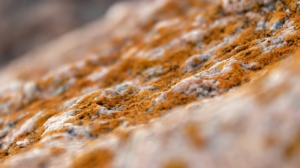Nature’s Architects: The Fascinating Structures Built by Animals
In the grand tapestry of the natural world, the ingenuity displayed by animals in constructing specialized habitats and structures is nothing short of awe-inspiring. From intricate nests to monumental mounds, these architectural feats not only showcase the remarkable adaptability and intelligence of various species but also play vital roles in their ecosystems. Let’s delve into the captivating world of Nature’s architects and explore some of the most extraordinary animal-built structures.
The Artistry of Bird Nests
Among the most well-known builders in the animal kingdom are birds. Species such as the weaver and the bowerbird have taken nest construction to an art form. Weaver birds create intricately woven nests using grasses and leaves, often suspended from trees to protect them from predators.
Bowerbirds, on the other hand, are renowned for their elaborate “bowers,” which are not nests in the traditional sense but rather intricate display structures. The males decorate their bowers with colorful objects—ranging from flower petals to plastic bottle caps—to attract mates, turning their architecture into a canvas for courtship.
Termite Mounds: Nature’s Skyscrapers
Termites are among the most industrious architects in the animal kingdom, often referred to as nature’s engineers. They construct massive mounds that can reach several meters in height, showcasing both their strength and architectural prowess.
Made of soil, saliva, and feces, these structures feature complex ventilation systems that regulate temperature and humidity, ensuring a stable environment for the colony. The design is so advanced that it rivals some human-made buildings in terms of efficiency and sustainability.
The Elaborate Dams of Beavers
When it comes to altering landscapes, few animals are as impactful as the beaver. As the original landscape architects, beavers build dams using fallen trees, branches, mud, and stones, creating ponds that not only provide them a safe habitat but also support a rich biodiversity.
The floods caused by their dams can transform ecosystems, fostering wetlands that serve as habitats for numerous other species. These industrious rodents exemplify how animal architecture can significantly influence the environment.
The Burrows of the Naked Mole Rat
In the harsh conditions of the African deserts, naked mole rats have evolved incredible underground structures. Their burrows can span vast distances, featuring separate chambers for nurseries, food storage, and waste disposal.
This complex social organization is essential for their survival in a challenging habitat, highlighting how their burrows are not just homes but thriving communities.
Spider Silk: The Art of Web Building
While small in size, spiders are master architects, spinning webs that demonstrate remarkable engineering skills. Different species have developed various types of webs, from the classic orb shape to funnel-shaped traps.
The silk used in web construction is a protein-based material that rivals steel in strength, allowing spiders to capture prey efficiently. Each web design serves a specific purpose, whether for hunting, protection, or even mating displays.
Coral Reefs: The Underwater Architects
Corals may not seem like traditional architects, but they are among the most prolific builders in the underwater world. Coral polyps secrete calcium carbonate, creating vast structures known as coral reefs.
These ecosystems are not only beautiful but also critical for marine life, providing shelter, breeding grounds, and feeding habitats for countless species. The delicate balance of coral growth and decline illustrates the profound impact of these small animals on global biodiversity.
Conclusion: A Testament to Nature’s Ingenuity
The structures created by animals serve as a testament to the incredible adaptations and collaborative efforts of species across the globe. From the simple nest of a bird to the expansive colonies of termites and the bustling underwater cities of coral reefs, these architectural endeavors highlight the interconnectedness of life and the importance of habitat preservation.
As we marvel at the wonders constructed by Nature’s architects, we must also remember our role in safeguarding the environments that allow these extraordinary structures—and the life that depends on them—to thrive. Through conservation efforts and a commitment to biodiversity, we can ensure that future generations will continue to be inspired by the remarkable ingenuity of the animal kingdom.
Sources:
- [modern_footnote_source_link]


























Add Comment